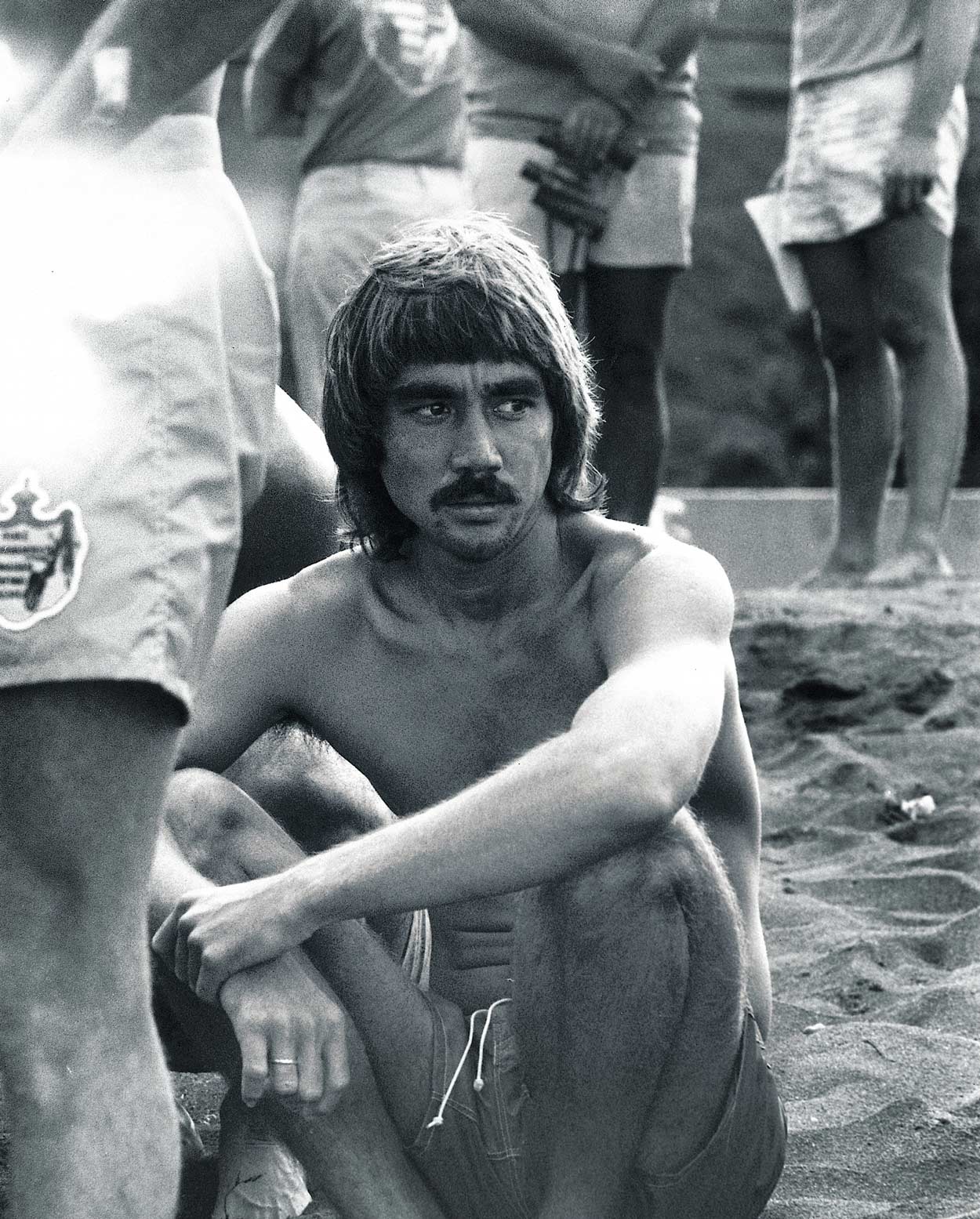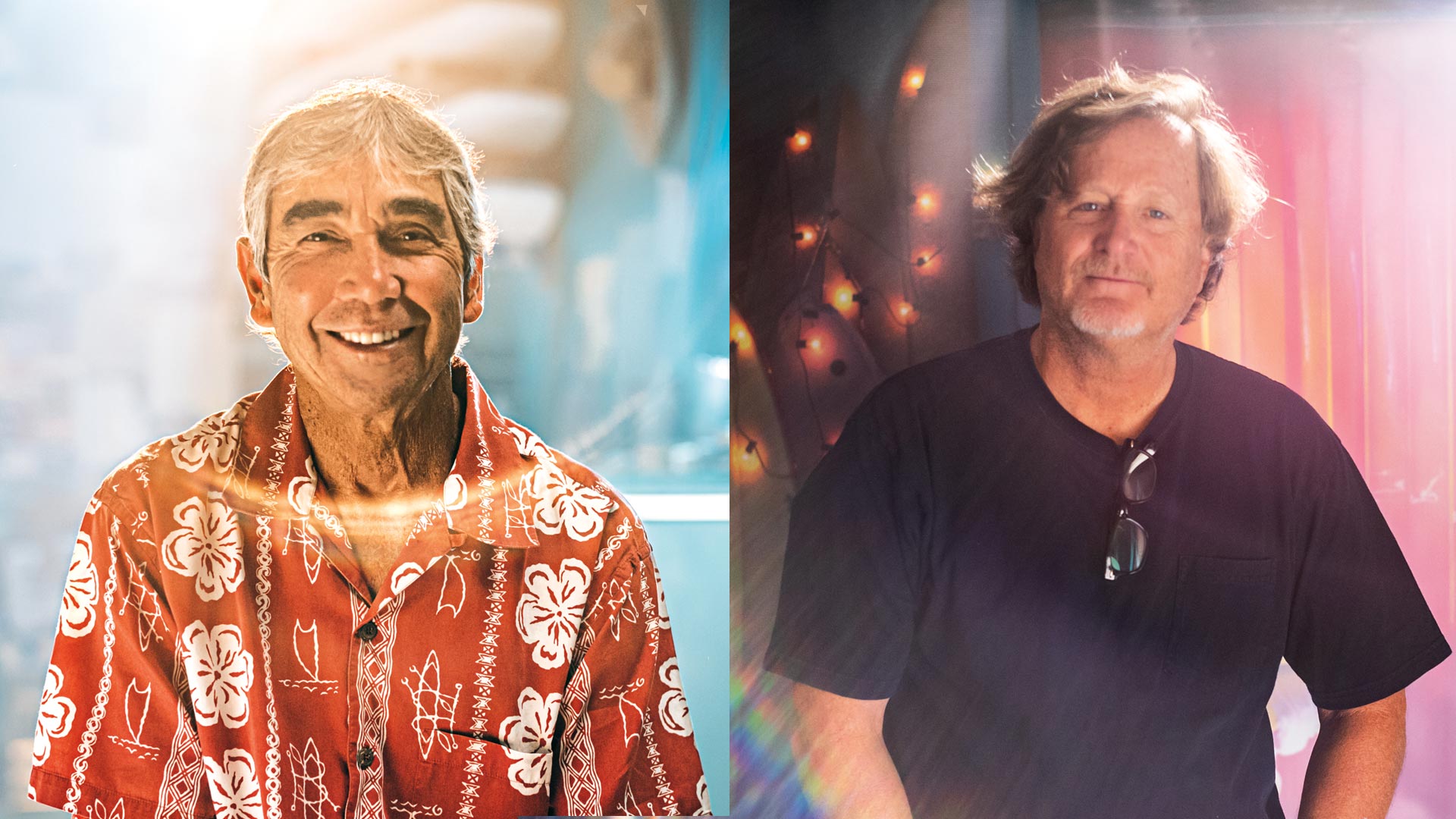There are few people that hold more clout in the action sports world than Gerry Lopez and Stacy Peralta. Known as “Mr Pipeline”, Lopez is one of the most influential surfers of all time, shaping the art of tube riding in the 1970s and pioneering world-class surf spots such as Uluwatu and G-Land.
As the ‘father of modern skateboarding’, Peralta has led an equally esteemed career. He was part of the original Z-Boys (or Zephyr Competition Team) in California during the 1970s, trailblazing a new style of skating alongside Tony Alva, Jay Adams and others. Later he went on to forge a path as a multi-award-winning filmmaker; he captured the essence of the sport’s early days in his Sundance Film Festival documentary, Dogtown and Z-Boys.
“The very first wave anyone gets in their life, they feel something so strong, and spend the rest of their life trying to recreate that feeling”
I met the legendary pair at Praia da Ribeira d’Ilhas in Portugal at the European premiere of Peralta’s latest film, The Yin and Yang of Gerry Lopez, a documentary about the enigmatic surfer’s life.
As I approached 73 year-old Lopez for our interview, he smiled and firmly shook my hand. His presence felt different to other athletes I’ve interviewed. As many have described before me, he has an almost Zen-like aura. He spoke softly and steadily, unhurried by the frenetic activity buzzing around him. Despite his incredible athletic career, it’s clear that his spiritual journey has left the greatest impact on the way he lives today.
By contrast, at 64, Peralta is only nine years Lopez’s junior, but he still has the energy of a stoked teenage boy. His passion and enthusiasm for skating shines through as we speak about his childhood, tearing up the streets of southern California. So, how did these iconic figures first start out?
Early days
Born in 1948, Lopez grew up in Hawaii “when it was still pretty innocent”. The islands didn’t become a US state until 1959, so rampant tourism was still years away. Lopez’s parents loved taking their family to Waikiki Beach to swim. “Locals used to refer to Waikiki as simply ‘the beach’ as if there were no other. It is magical there,” says Lopez. “Hawaiians call it their ‘kawehewehe’, the healing waters. They would swim there whenever they weren’t feeling well – physically, mentally, spiritually. They believed it would make them feel better – and it really does.”

It was here that Lopez was first pushed onto a wave by his mother. He was instantly hooked. “The very first wave anyone gets in their life, they feel something so strong, and spend the rest of their life trying to recreate that feeling,” he says. “You can’t quite put your finger on it. What’s really going on is very spiritual,” Lopez continued to surf on an old wooden longboard, just outside his grandmother’s house in Pākalā, before graduating onto steeper waves at Ala Moana. He became the state junior surf champion in 1962, aged 14, when the surf industry was still in its infancy, a relatively niche sport on the brink of becoming an international movement.
“The cops could show up any minute. As a result, we lived life on the edge and in the moment. It was a rare time on earth”
Meanwhile, Peralta grew up a decade later, surfing and skating in Venice, California. “Back then, there were no skateboard shops, parks or contests. You couldn’t even go to a store and buy a board. You had to make your own. So the idea that it could lead to something was absurd,” says Peralta. Like Lopez, Peralta was living on the cusp of a sporting revolution. “Skating in the 1970s was totally outlaw. Once the polyurethane wheel was invented [in 1970], suddenly we could ride terrain that we couldn’t to ride before, like backyard pools. It was totally illegal and so much fun,” he says. “You never knew how long you could skate a pool. The cops could show up any minute. As a result, we lived life on the edge and in the moment. It was a rare time on earth.”






